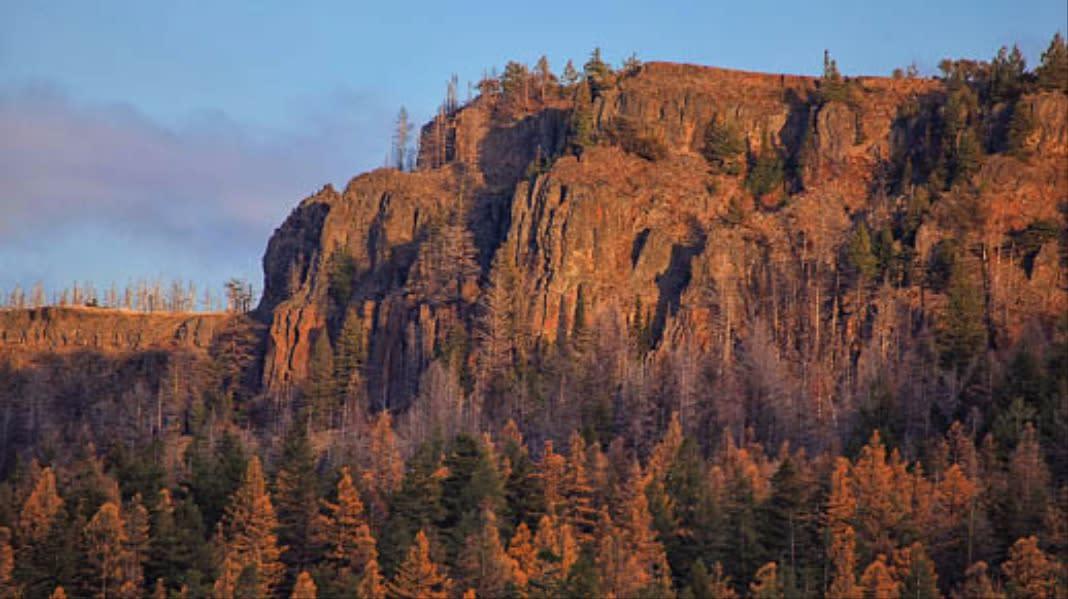
In the Ochoco National Forest, North Point overlooks Bridge Creek Wilderness at sunrise. A federal judge has finalized the return of national forest protections for large trees growing east of the Cascades.
Courtesy U.S. Forest Service
A federal judge has finalized the return of national forest protections for large trees growing east of the Cascades.
The order brings back protections that had long prohibited logging trees larger than 21 inches in diameter from six national forests in eastern Oregon and Washington.
During the final days of the Trump Administration, the U.S. Forest Service amended its guidelines known as Eastside Screens. The amendment removed the agency’s 21-inch standard that had protected large trees across 8 million acres of forestland since 1994.
The agency at the time determined the change wouldn’t significantly impact the environment, and it bypassed procedures that would typically give the public opportunities to comment. The Forest Service claimed this sudden change was needed to thin forests and prevent major wildfires.
Six conservation groups sued the agency in 2022, arguing the policy change violated national forest and species protections laws. The following year, U.S. Magistrate Judge Andrew Hallman recommended the Forest Service restore the large tree protections, calling the agency’s decisions “arbitrary and capricious.” But his recommendations needed final approval from a U.S. district court judge.
On Friday, District Judge Ann Aiken issued an order agreeing with Hallman. Aiken concluded the Forest Service violated several federal laws and “failed to take a hard look at the amendment’s change and its impact on aquatic species.”
Aiken’s order calls on the Forest Service to prepare an environmental impact statement, which is required when a new policy could harm the environment. That process also requires the agency to collect public comments.
The Forest Service did not immediately respond to a request for comment.
Conservation groups applauded Aiken’s decision, calling it a win for eastside forests where just 3% of trees are larger than 21 inches in diameter.
The nonprofit Greater Hells Canyon Council was among them.
“The amount of trees that this actually applies to is very few,” conservation director Jamie Dawson said. “So it’s very important that they stay standing and are providing that wildlife habitat value: Storing carbon dioxide, cleaning pollution from the air, influencing the water cycle, cleaning our drinking water, all of the stuff that large and old trees do.”


